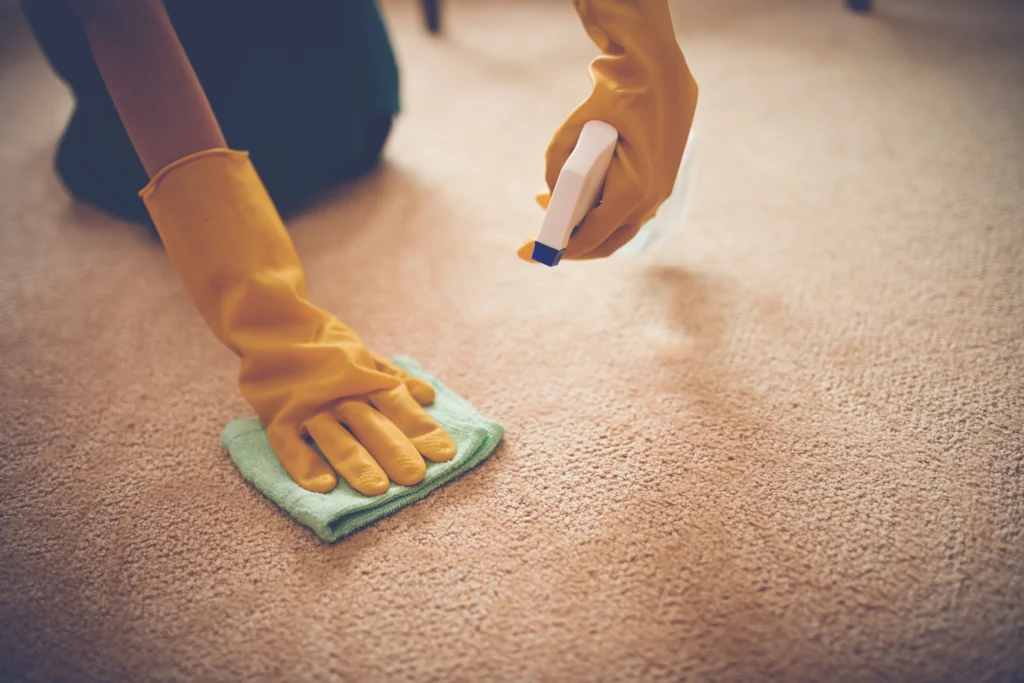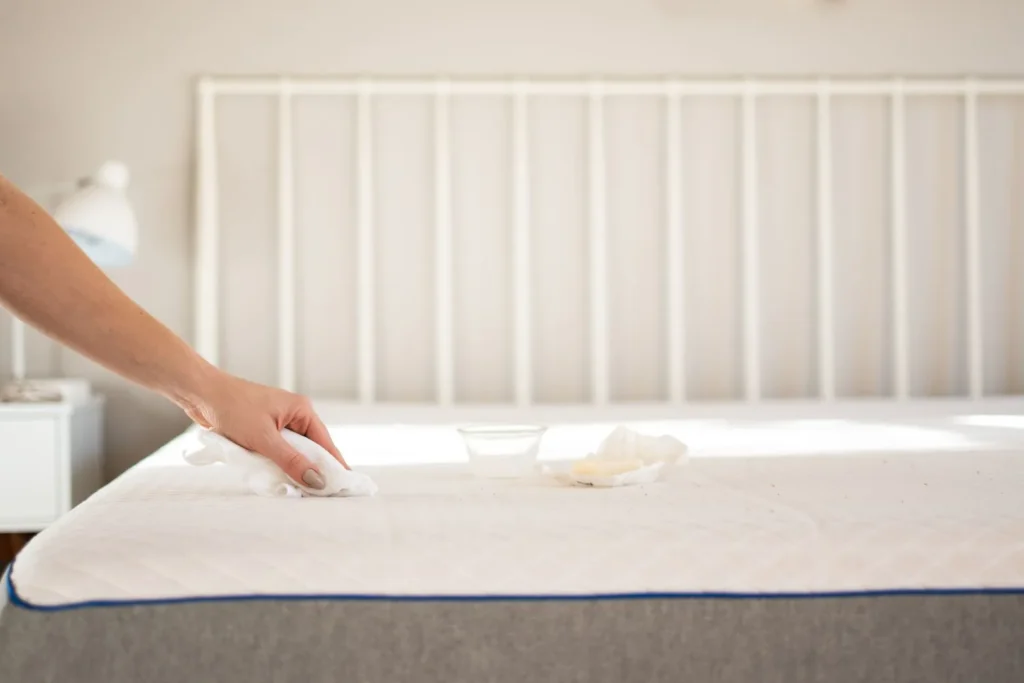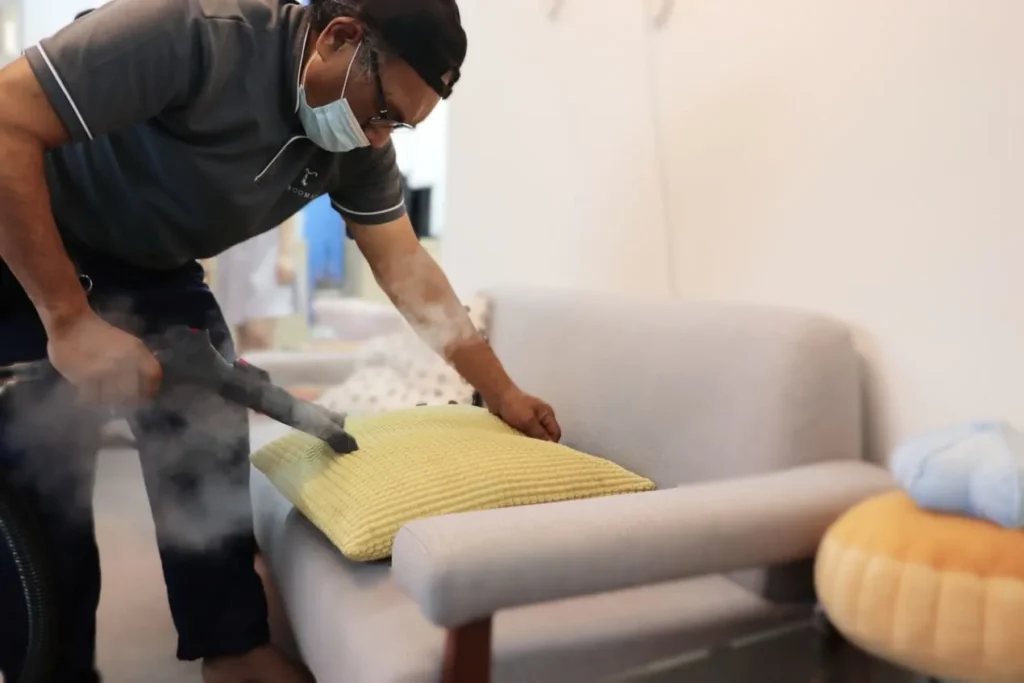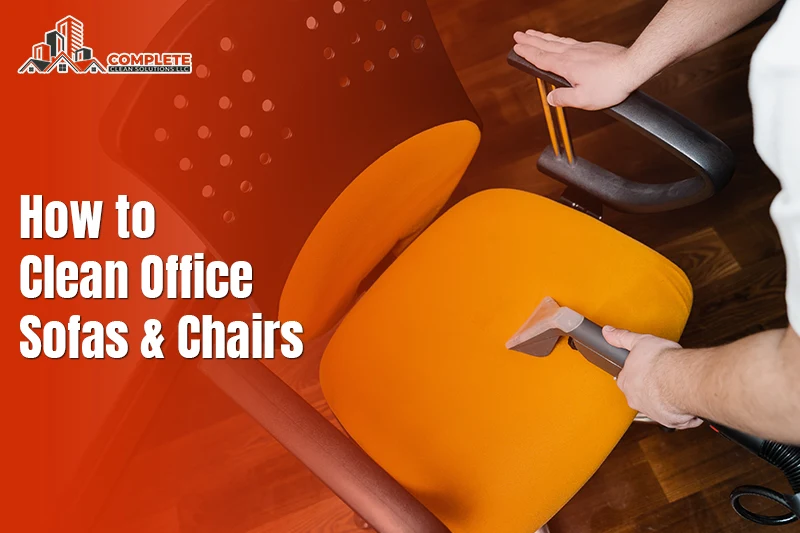Why Keeping Office Sofas and Chairs Clean Is Essential
Office furniture collects dust, stains, and odors quickly. These issues build faster in busy workplaces. Visitors notice right away when sofas and chairs look dull or smell bad. Learning how to clean office sofas and chairs is the first step toward building trust and showing real care for the entire office space.
Dust and dirt on seats or arms reduce the look of any meeting room. Clients see stains or worn spots and may feel the office is less professional. A polished look matters because furniture reflects the brand image and values. Regular care keeps the atmosphere bright, improves first impressions, and helps maintain strong company pride.
Clean furniture also improves hygiene for every employee. Germs multiply fast on fabric or leather when ignored. When surfaces stay fresh, staff feel safe, comfortable, and more willing to work with energy. This practice not only boosts morale but also reduces sick days and keeps teams strong.
Fresh sofas or chairs make rooms pleasant and welcoming. They support health, reduce odors, and extend furniture life. Regular care, such as daily wiping, shows a visible change. By following how to clean office sofas and chairs, workplaces stay clean and comfortable for teams and visitors.
Know Your Furniture Materials
Fabric, Leather, Vinyl: Different Cleaning Needs
Fabric seats attract dust and crumbs daily. A vacuum with a soft brush clears dirt from seams. It reduces buildup that harms fabric and keeps it neat for staff use. This simple habit also extends fabric life, and it lowers the chances of deep stains.
Shampooing comes next when surface dirt remains. A quality fabric shampoo draws out stains, restores bright color, and refreshes seat comfort. Using shampoo every few months keeps chairs clean. This step adds depth to care, and it ensures fabric stays inviting for longer.
Leather seats need a soft approach, and harsh products must be avoided. Always choose mild cleaners with a gentle cloth. Wipe in slow strokes to protect the grain. This careful method removes grime, and it avoids rough marks that shorten chair life. Gentle cleaning also helps leather keep its rich appearance, and it shows pride in office upkeep.
Conditioning is vital once the leather is clean. It restores needed oils. A leather conditioner keeps the surface moist, and it prevents cracks that form with age. Applying conditioner at steady times adds shine.
Vinyl seats are easier to maintain than fabric or leather. Warm water mixed with mild soap removes marks easily. A soft cloth works best, and it avoids scratches that rough tools may cause. Routine cleaning stops fading, and it keeps surfaces bright with little effort. Easy steps like these lower repair costs, and they add to a clean workplace. Avoiding common cleaning mistakes ensures proper upholstery care, since effective office cleaning depends on applying the right care for each material and doing it with steady habits.
Basic Tools and Supplies
Essentials Before You Begin
Tools
Vacuum Cleaner with Brush Attachment
A vacuum with a brush head is required for dust removal. It reaches seams and gaps where clothes cannot be cleaned. Using it often stops the buildup and keeps fabric and leather fresh. Clean sofas and chairs stay bright when this tool is used. Adding it to steady office furniture cleaning tips maintains a good look.
Materials
Microfiber Cloths
These cloths hold dust and wipe away marks with care. They guard delicate finishes and do not leave streaks. Safe on fabric as it gives gentle daily cleaning.
Upholstery Cleaner
A light detergent clears stains without heavy odors. Correct use keeps colors bright and surfaces soft. With steady care, materials remain neat and welcoming for staff and guests.
Supplies
Leather Conditioner
Leather needs extra care to avoid cracks and dryness. A conditioner restores oils and keeps the surface flexible. Regular use adds shine and makes chairs and sofas last longer. This attention to detail builds comfort for all.
Stain Remover Pens
These pens give fast help for ink, coffee, or snack stains. They stop marks from setting during busy hours. Keeping them ready lets staff handle spills with ease. Using them often supports neat spaces and a healthy feel. Following steady office furniture cleaning tips keeps the office bright.
Sequential Guide: Cleaning Office Chairs
From Wheels to Backrest
Step 1: Remove Dust and Crumbs

Begin by focusing on the base since these parts trap grit fast. Crumbs and dust slip into gaps that clothes cannot reach. Using a vacuum with a brush tool cleans deeper. Frequent vacuuming also keeps the wheels moving smooth and stops fabric wear. Starting this way ensures you always clean office chairs in the proper order.
Step 2: Spot Clean Stains
Next, look for marks like coffee rings or ink spots, since these damage quickly. Use a mild cleaner on cloth seats, and choose a safe product for leather. Always test the product on a small hidden space, avoiding harm to the surface. Removing stains right away keeps chairs sharp and extends life lifespan. Quick action means less stress for staff and guests.

Step 3: Wipe Armrests and Base

Armrests collect body oils each day, and bases hold hidden dust, too. Wipe them with a damp cloth and mild soap to restore shine. Give equal care to the entire base as germs settle there quickly. Clean armrests and bases reduce germs.
Step 4: Upholstery Deep Cleaning
For fabric seats, apply shampoo to draw out dirt deeply. For leather seats, use a gentle cleaner first. This treatment adds moisture back and prevents cracks from forming soon. Doing deep cleaning at least twice yearly keeps comfort high and looks bright. Both fabric and leather need steady care to last longer.

Step 5: Dry and Air Properly

After washing, always allow the chair to dry fully, avoiding damp smells later. Open windows for fresh air, or use fans for faster drying. Moist seats smell musty and can attract germs quickly, hurting comfort at work. Airing chairs keeps them safe, clean, and ready for steady use. This last step matters most when you clean office chairs for daily comfort.
Sequential Guide: Cleaning Office Sofas
Proper Cleaning for Daily Use Furniture
Step 1: Pull Cushions and Clean Properly
Begin by pulling out all loose cushions. Then vacuum the hidden gaps slowly. Dust and crumbs gather under cushions, and pests may settle there if ignored. A steady vacuum removes grit fully and protects fabric softness for longer use. This action is the proper way to start and will help you maintain office sofas in the right manner.

Step 2: Spot Treat Stains

When coffee spills or ink drops appear, treat them first. Use a cleaner for fabric, and always test it on a small patch. Blot the mark slowly, and repeat until the stain lifts from the surface. Early treatment of stains preserves sofa colors. It avoids deep damage that may spread.
Step 3: Steam Upholstery Clean
Apply fabric shampoo to the cloth material. Use foam to reach deep fibers. For stronger results, a steam machine can remove odors. Steam must be used with care, and low heat is best for safety. This deeper cleaning makes sofas look new, restores comfort, and ensures they remain fresh.

Step 4: Wipe Frame and Legs

Frames and legs gather dust each day, and marks become clear when ignored. Use a damp cloth with mild soap. Wooden frames benefit from polish, and metal parts gain luster when wiped. Keeping the base clean gives the sofa a cared-for look and builds upholstery cleaning for offices.
Step 5: Refresh with Scent Control
Once the sofa is dry, spray a fabric freshener. Place odor bags beneath cushions. Odors build fast in busy areas, and they lower comfort for both staff and guests. Fresh scents create a welcoming mood, and they make the room calmer. Adding this last step is easy, and it ensures you maintain office sofas with steady care.

Stain Removal Hacks
Easy Office Stain Removal Tips
Coffee or Tea
Coffee or tea spills can stain, but vinegar with baking soda helps. Spread the mix on the spot and let it bubble. Blot with a dry cloth and repeat until it lightens. This safe method protects fabric color. It lowers the lasting harm to seats as well.
Ink
Ink marks may appear tough, but alcohol can lift them. Try it on a hidden area first, then dab gently. Use a soft cloth and blot without scratching. Time and care matter since ink lifts slowly.
Grease
Grease marks spread fast, yet talc powder absorbs them with ease. Cover the stain, let it rest briefly, then brush off. Repeat if any mark is still visible. Repeating this trick pulls oil out, and it keeps fabric clean without extra stress.
Food Spills
Food spills can cause stains, but soap and water help lift them. Blot with a clean cloth until the mark lightens. Repeat if needed. Act quickly to stop stains from sinking deep. These tricks are simple, and they support DIY office chair cleaning with ease.
How Often Should You Clean?
Cleaning Frequency for Office Furniture
Daily
Give sofas and chairs a quick wipe with a cloth, and vacuum surfaces too. This step removes dust, and it stops dirt from settling deep. Daily attention keeps furniture neat, and it ensures staff enjoy a clean space. Even small actions make a strong impact, and they support steady office pride. Regular daily habits also lower the chance of lasting wear, just as guides on how to clean allergens in your bedroom highlight the value of consistent care.
Weekly
Spend time spot cleaning stains and disinfect areas that are touched often. Key spots include armrests and edges, since these gather oils and germs. Doing this each week limits odors, and it stops bacteria from spreading. A weekly habit also reduces bigger issues, and it helps extend the lifespan. Weekly tasks also make quarterly and yearly jobs much easier to finish.
Quarterly
Plan a full deep clean every three months, and make use of shampoo or steam. Both methods reach dirt that normal wiping cannot touch, and they refresh the fabric fully. Another option is rotating chairs and sofas, and cleaning hidden sections. This avoids buildup in unseen places, and it ensures furniture stays bright. Quarterly care adds balance, and it stops hidden problems from growing worse.
Yearly
Call experts for full sanitization, and let them use their advanced tools. They clean areas that regular care may miss, and restore furniture strength. A complete professional office furniture cleaning once a year makes spaces safe, and it improves health. This routine also extends value, and it ensures office areas stay welcoming for staff and visitors.
Professional vs DIY Cleaning
When to Call a Pro
DIY care is best for light tasks, and it keeps daily costs low. A simple wipe with cloths or a quick pass with a vacuum removes dust. Using mild cleaners on fabric or leather helps reduce marks, and it keeps furniture bright. These small steps are simple to handle, and they suit daily routines. DIY care gives staff control, and it supports neat workspaces when used often. Regular DIY actions also build good habits, and they make upkeep less stressful.
Experts are vital for deeper needs, and they bring strong skills and tools. Odors that linger in fabric, stains that sink too deep, and delicate materials all need proper care. They use machines that reach layers of dirt, and they restore freshness. Calling trained staff saves time, and it avoids the harm that harsh methods may cause. Their work extends the life of chairs and sofas, and it ensures safe use. Knowing when to call builds trust, and it adds value to your office furniture cleaning tips. Professional visits also give peace of mind. They help protect sustainable investments.
Conclusion
Keep Your Office Furniture Fresh
Clean furniture shows true care, and it proves a commitment to comfort. Neat seats create a good look, and they also raise workplace pride. Simple steps like wiping and vacuuming protect against stains, and they stop odors too. This routine helps staff feel valued, and it makes guests trust the space. A clean office reflects order, and it extends the life of sofas and chairs for many years.
Start steady cleaning today, and see how it changes your workspace daily. Use cloths and vacuums for quick jobs, and call experts when stains go deep. Their care restores freshness, and it adds strength to your furniture with ease. Choose pro help when the task is large, and let them handle the rest. Knowing how to clean office sofas and chairs ensures a neat look, and it builds a safe place for staff and visitors. For reliable results, trust CCS Complete Clean to keep your workspace spotless and fresh.
FAQs
Office Sofa and Chair Cleaning Questions Answered
Yes, but only on fabric chairs with care. Keep the heat low and test a hidden spot. Move the nozzle gently. Then let the chair dry fully before use.
Clean leather with a soft cloth. Wipe gently and then apply conditioner after. Repeat often to stop cracks and keep the leather smooth.
Use the vacuum to clear crumbs beneath cushions. Apply baking soda or odor packs weekly. Open windows to enjoy constant fresh air.
Blot stains with alcohol on a soft cloth. Keep dabbing softly until the mark lessens. Then rinse well with clean water. Knowing how to clean office sofas and chairs offers clear steps for stain removal.

